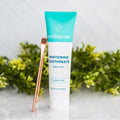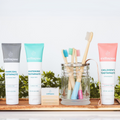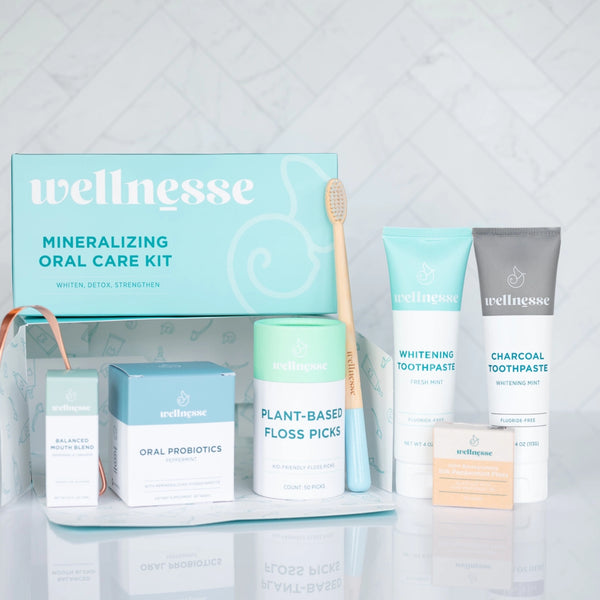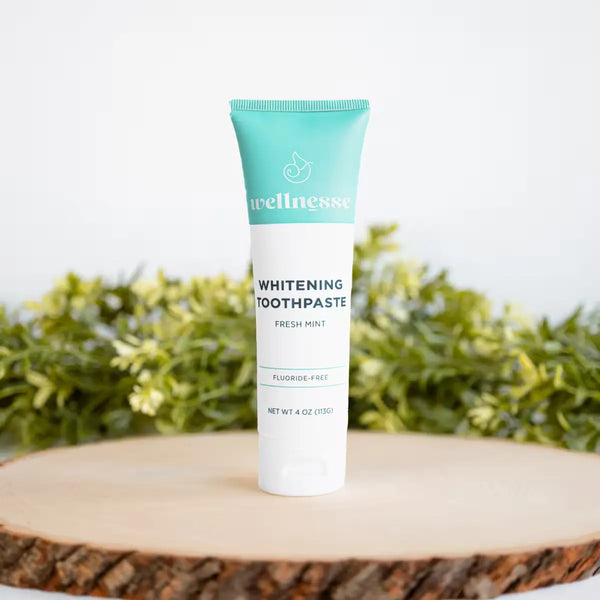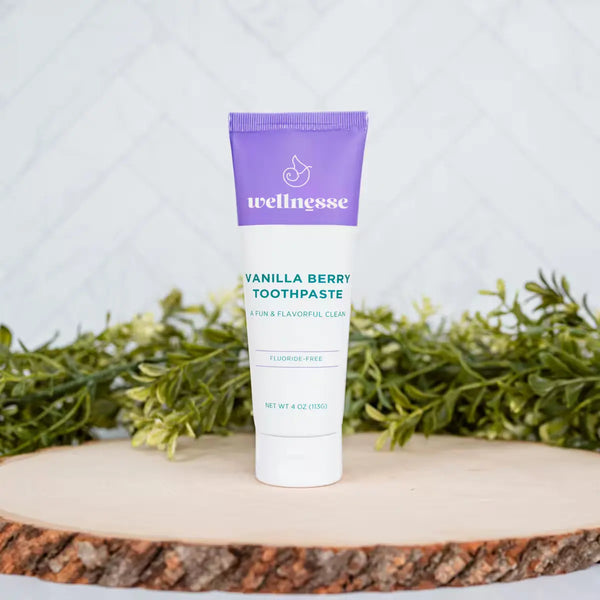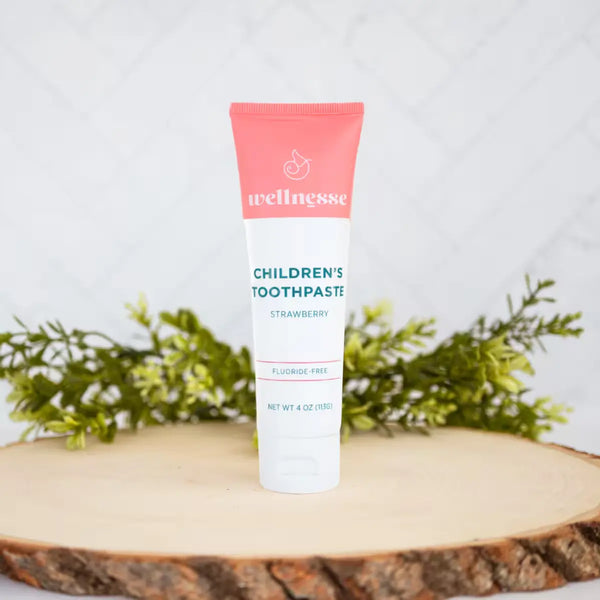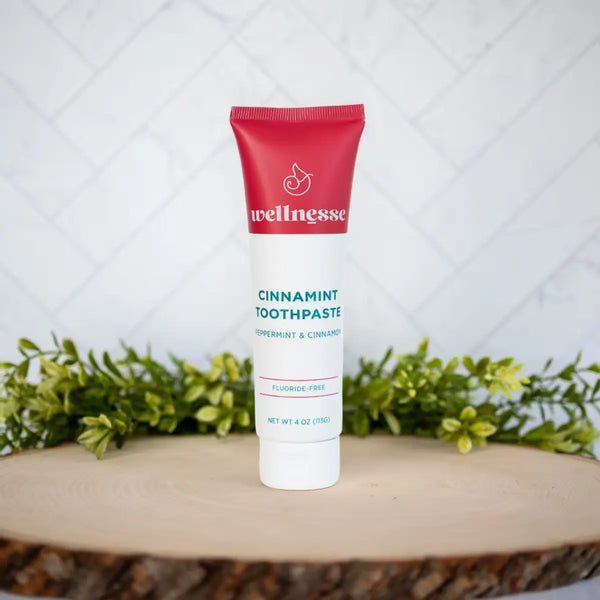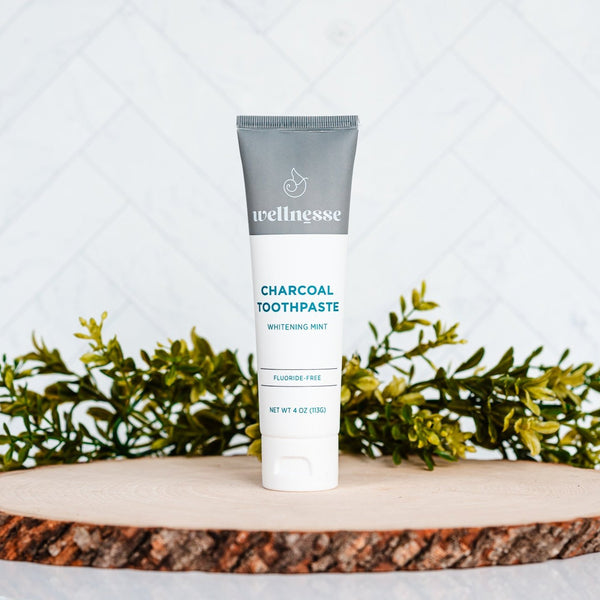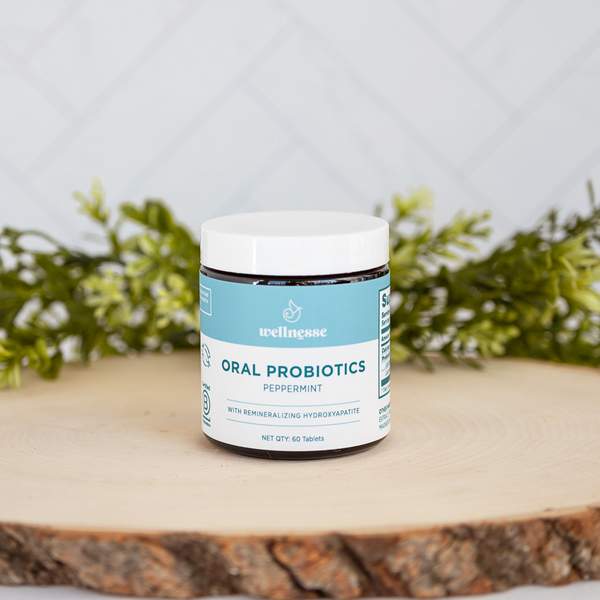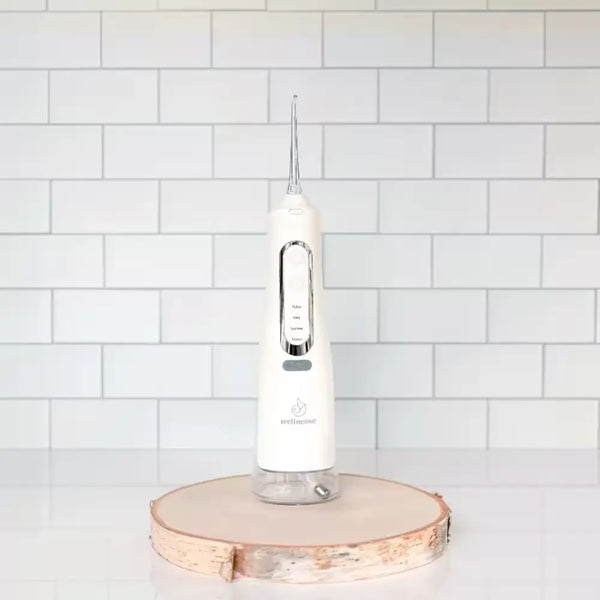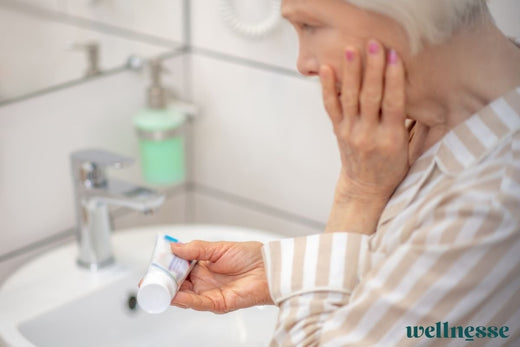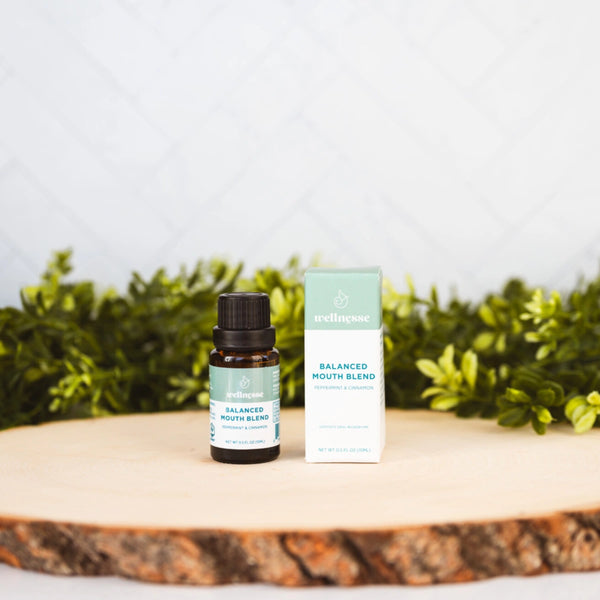First thing in the morning and last thing at night, brushing our teeth is an essential part of our daily hygiene routines. Not only does this practice protect against bad breath, cavities, and stained teeth, but it also keeps our hearts healthy – research has shown a link between gum disease and the risk of developing heart problems.
Without a doubt, brushing our teeth frequently is something we should all be doing. But when you look closely at some of the common ingredients found in conventional toothpaste, it’ll make you think twice about what you are putting in your mouth.
From artificial sweeteners to toxic chemicals, many of these ingredients are anything but friendly to our health and well-being.
As always, knowledge is power. When we know more about the nasty toxins potentially lurking in our toothpaste, we can take steps to eliminate unsafe chemicals from our daily routines.
In this blog, we’re diving into five of the most common toxic toothpaste ingredients and why we want to avoid them. We’ll also look at some of the safe and effective alternatives you can use to keep your teeth healthy and clean.
Clean, effective alternatives are our specialty at Wellnesse. Cut the oral care toxins with our fluoride-free toothpaste with remineralizing hydroxyapatite!
1. Fluoride
Fluoride is an ingredient used by most conventional toothpaste brands. But why?
In the early 1900s, dentists noticed that people who lived in areas where the water was naturally higher in fluoride had fewer cavities. Soon, a link between fluoride and dental hygiene was established, and it became standard for toothpaste to include fluoride.
Fewer cavities sound like a good thing, but unfortunately, the story doesn’t end there. Fluoride is now a confirmed neurotoxin linked to thyroid issues in adults and children alike.
One study in Canada found that adults with higher fluoride levels in their urine were more at risk of having an underactive thyroid. Similarly, another study looking at Chinese school children noted that even low to moderate fluoride exposure affected their thyroid function and had a detrimental effect on their IQ scores.
If the risks to our health aren’t enough, fluoride can harm our oral health as much as it may help it. Fluoride can lead to brown spots and discoloration; a condition known as fluorosis.
Younger children are especially at risk because they don’t always remember to spit their toothpaste out instead of swallowing it. (That’s why we created a toothpaste that’s completely safe, even if swallowed!)
We’ve written about the potential dangers of fluoride before, so if you want to dive deeper into the risks, check out our post here.
2. Propylene Glycol
Propylene glycol is a common ingredient in paint and antifreeze and was dubbed the ‘2018 Allergen of the Year’ by the American Contact Dermatitis Society. So, no one could blame you for wondering what it is doing in your toothpaste in the first place.
Propylene glycol is used as a thickening, emulsifying, and stabilizing agent. In this case, propylene glycol keeps toothpaste smooth and prevents it from drying out.
But for all the texture benefits, large amounts of propylene glycol can be toxic and may lead to serious health complications, including kidney damage and sepsis-like symptoms.
Although it appears on toothpaste ingredient labels in relatively small concentrations and is “Generally Recognized as Safe” by the FDA, most of us will think twice about putting this toxic ingredient in our mouths.
3. Parabens
Parabens are common preservatives found in many personal care products, including toothpaste. However, a longer shelf life isn’t worth the risks associated with this group of toxins, which have been attracting attention for years because of their effect on our hormones.
According to the Environmental Working Group, parabens are endocrine disruptors that can mimic estrogen in our bodies. They’ve been linked to everything from lowered fertility to an increased risk of breast cancer.
4. Artificial Sweeteners
Most manufacturers add artificial sweeteners to their formulas - toothpaste included - to make them more palatable.
When it comes to oral care and toothpaste, saccharin and aspartame are two of the most commonly used artificial sweeteners.
Saccharin is one of the most popular artificial sweeteners and is generally considered safe, especially when compared with actual sugar. However, a 2019 study into the long-term effects of this sweetener on rats found that it was associated with an increased risk of diabetes, obesity, and impaired kidney and liver function.
Granted, humans aren’t rats. But the study raises some questions about how safe saccharin is when we are using it daily in our mouth (where we know it’s being absorbed into our bodies!)
Human studies on the safety of aspartame are limited, too. But a review of the evidence published in 2017 called for greater scrutiny of this artificial sweetener. When they combined the limited evidence from human research with the results of animal studies, the researchers found that aspartame may increase oxidative stress and damage our cell membranes, leading to inflammation.
5. Artificial Colorings and Dyes
You probably don’t need us to tell you that the bright, fun colors and funky stripes in conventional toothpaste are not natural. Most conventional toothpaste contains artificial colors to give them those eye-catching hues.
While these dyes and colors are technically approved by the Food and Drug Administration, that’s not necessarily as reassuring as we would hope.
Research published by the American Society for Experimental NeuroTherapeutics noted a body of evidence that links artificial food colorings to hyperactivity and behavioral issues in children.
The Center for Science in the Public Interest has pulled together many of the scientific studies on the safety of food dyes and colorings, like those used in toothpastes. In addition to the correlation between artificial dyes and hyperactivity, their report reveals potential links to allergies and cancer.
If the health issues alone weren’t enough to put us off these dyes, most artificial food colorings are derived from petrochemicals, which makes them environmentally damaging as well as threatening to your health.
Is Fluoride-Free Toothpaste Effective?
We’ve looked at some of the harmful chemicals found in many conventional toothpastes and can probably agree these aren’t ingredients we want anywhere near our mouths. But what is the alternative?
Fortunately, it is possible to take care of your teeth without resorting to harsh ingredients and toxic chemicals. Our Whitening Toothpaste and Charcoal Toothpaste use only safe, natural ingredients that work to strengthen teeth, remove staining, and eliminate bacteria.
Some of the powerful active ingredients we use in our mineralizing toothpaste include:
Hydroxyapatite
A naturally occurring mineral, hydroxyapatite is a key component of our bones and teeth. Used in toothpaste, it acts to strengthen and repair our tooth enamel
A 2019 study published in Nature and a study published in July of 2023 compared hydroxyapatite toothpaste with conventional fluoride toothpaste and found it was just as effective at repairing and preventing cavities.
Green Tea Extract
Packed with antioxidants, green tea extract helps to reduce inflammation and fight off bacteria. This is great news for your dental health, as bacteria are one of the primary causes of cavities, gum disease, and bad breath.
Aloe Vera
Aloe vera is well-known for its healing properties. Naturally antibacterial, it also helps to keep teeth and gums healthy, preventing inflammation and eliminating harmful bacteria. Aloe even has teeth-whitening properties, making it an essential ingredient in our Whitening Toothpaste.
Neem Oil
Extracted from the evergreen Neem tree, Neem oil has many benefits for human health. Its natural antibacterial properties help to prevent cavities, remove plaque, and reduce the risk of gum disease.
A Safe Alternative for Your Teeth
So, is non-fluoride toothpaste effective? Yes! Natural, non-fluoride toothpastes can keep teeth clean, prevent bad breath, and fight tooth decay and gum disease, all without harmful chemicals or toxins.
At Wellnesse, we promise to bring you safe and effective personal care products that help you protect your health and your family’s health. We use only clean, all-natural ingredients, most of which have the cleanest possible rating from the EWG.
We formulated our best selling Whitening Toothpaste as a safe, effective alternative to conventional toothpastes, and there’s a reason it’s a family favorite! Shop our remineralizing hydroxyapatite toothpaste and all our oral care essentials for your healthiest, happiest smile!
Resources
Gum disease and the connection to heart disease: https://www.health.harvard.edu/diseases-and-conditions/gum-disease-and-the-connection-to-heart-disease
Malin, A. J., Riddell, J., McCague, H., & Till, C. (2018). Fluoride exposure and thyroid function among adults living in Canada: Effect modification by iodine status. Environment international, 121(Pt 1), 667–674. https://doi.org/10.1016/j.envint.2018.09.026
Wang, M., Liu, L., Li, H., Li, Y., Liu, H., Hou, C., Zeng, Q., Li, P., Zhao, Q., Dong, L., Zhou, G., Yu, X., Liu, L., Guan, Q., Zhang, S., & Wang, A. (2020). Thyroid function, intelligence, and low-moderate fluoride exposure among Chinese school-age children. Environment international, 134, 105229. https://doi.org/10.1016/j.envint.2019.105229
Jacob, S. E., Scheman, A., & McGowan, M. A. (2018). Propylene Glycol. Dermatitis : contact, atopic, occupational, drug, 29(1), 3–5. https://doi.org/10.1097/DER.0000000000000315
Zar, T., Graeber, C., & Perazella, M. A. (2007). Recognition, treatment, and prevention of propylene glycol toxicity. Seminars in dialysis, 20(3), 217–219. https://doi.org/10.1111/j.1525-139X.2007.00280.x
What Are Parabens, and Why Don’t They Belong in Cosmetics? https://www.ewg.org/what-are-parabens
Azeez, O. H., Alkass, S. Y., & Persike, D. S. (2019). Long-Term Saccharin Consumption and Increased Risk of Obesity, Diabetes, Hepatic Dysfunction, and Renal Impairment in Rats. Medicina (Kaunas, Lithuania), 55(10), 681. https://doi.org/10.3390/medicina55100681
Choudhary, A. K., & Pretorius, E. (2017). Revisiting the safety of aspartame. Nutrition reviews, 75(9), 718–730. https://doi.org/10.1093/nutrit/nux035
Arnold, L. E., Lofthouse, N., & Hurt, E. (2012). Artificial food colors and attention-deficit/hyperactivity symptoms: conclusions to dye for. Neurotherapeutics : the journal of the American Society for Experimental NeuroTherapeutics, 9(3), 599–609. https://doi.org/10.1007/s13311-012-0133-x
Food Dyes: A Rainbow of Risks: https://cspinet.org/resource/food-dyes-rainbow-risks
Amaechi, B.T., AbdulAzees, P.A., Alshareif, D.O. et al. Comparative efficacy of a hydroxyapatite and a fluoride toothpaste for prevention and remineralization of dental caries in children. BDJ Open 5, 18 (2019). https://doi.org/10.1038/s41405-019-0026-8
Paszynska E, Pawinska M, Enax J, Meyer F, Schulze zur Wiesche E, May TW, Amaechi BT, Limeback H, Hernik A, Otulakowska-Skrzynska J, Krahel A, Kaminska I, Lapinska-Antonczuk J, Stokowska E and Gawriolek M (2023) Caries-preventing effect of a hydroxyapatite-toothpaste in adults: a 18-month double-blinded randomized clinical trial. Front. Public Health 11:1199728. doi: 10.3389/fpubh.2023.1199728
